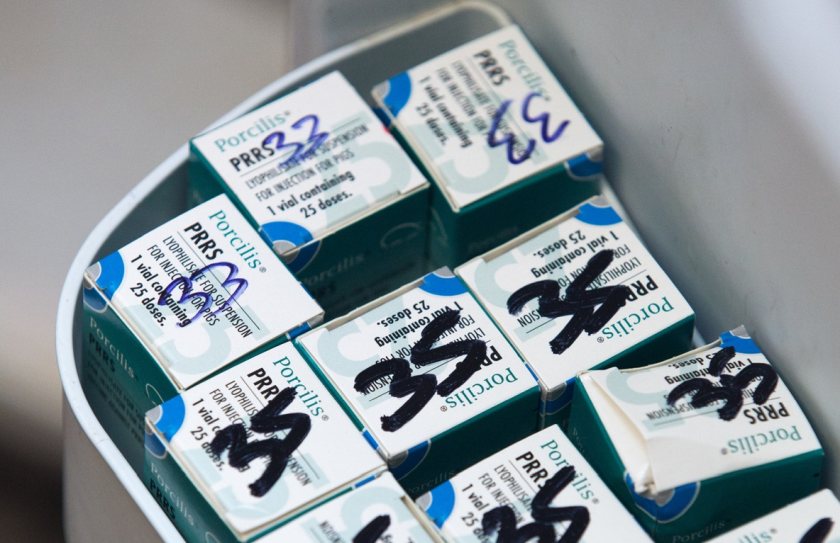
The vast majority of farm fridges are storing vaccines at the wrong temperature, putting livestock health at risk and prompting urgent calls for farmers to upgrade their equipment using grants.
Farmers are being encouraged to make use of the latest round of Farming Equipment and Technology Fund (FETF) grants to help cover the cost of specialist vaccine fridges.
It follows a study by MSD Animal Health which found that 84% of on-farm fridges are storing vaccines outside the recommended temperature range.
Experts at the firm warn that this situation that could compromise the effectiveness of vital animal health treatments.
Defra's FETF scheme, which was recently announced, offers up to 50% funding towards the cost of purchasing a medical-grade fridge.
This support could save farmers several hundred pounds while ensuring vaccines are stored at the correct temperature, thereby helping to protect livestock health.
Maintaining proper vaccine storage is essential to preserve vaccine efficacy, MSD Animal Health explains.
If vaccines are not kept at the appropriate temperature, their effectiveness can be reduced, heightening the risk that they will not perform as intended.
MSD conducted a study across 19 farms in the south west of England, with the results revealing widespread problems with vaccine storage.
It showed that none of the fridges surveyed consistently maintained the recommended temperature range of 2–8°C.
A total of 84% of the fridges recorded at least one temperature reading above 8°C, with some reaching as high as 24°C.
Meanwhile, 58% of fridges recorded temperatures at or below 0°C, with one dipping as low as -12°C.
In numerous instances, temperatures remained outside the safe range long enough to negatively affect the potency of the vaccines.
Paul Williams, technical manager for ruminants at MSD Animal Health, warned of the risks: “On-farm storage is the weakest link in the vaccine cold chain.
"Animal health vaccines are extremely fragile, and once damaged, the effect is irreversible – you can’t tell by looking at them if they’re still effective.
“If you’re storing vaccines on farm, you should be checking the maximum and minimum temperatures daily. If they’re outside the 2–8°C range, something needs to be done.”
Mr Williams stressed that the new round of grant funding is an ideal opportunity for farmers to evaluate their current storage arrangements and, if necessary, invest in a purpose-built vaccine fridge.
He also reminded farmers of best practices when it comes to storage: vaccines should not be placed at the back of the fridge, where they may freeze, nor in the door, where temperatures are likely to fluctuate each time it is opened.
Additionally, factors such as the fridge’s age, placement, and the surrounding temperature can significantly affect its performance.
Domestic fridges, he added, are designed for stable room-temperature environments and can only cool their contents, not warm them.
“In an ideal world, vaccines shouldn’t be stored on-farm at all – but if they are, they should be used as soon as possible and transported in a cool bag.
"Vaccinating a large number of animals takes time, so don’t take all the vaccine out of the fridge at once,” he advised.
